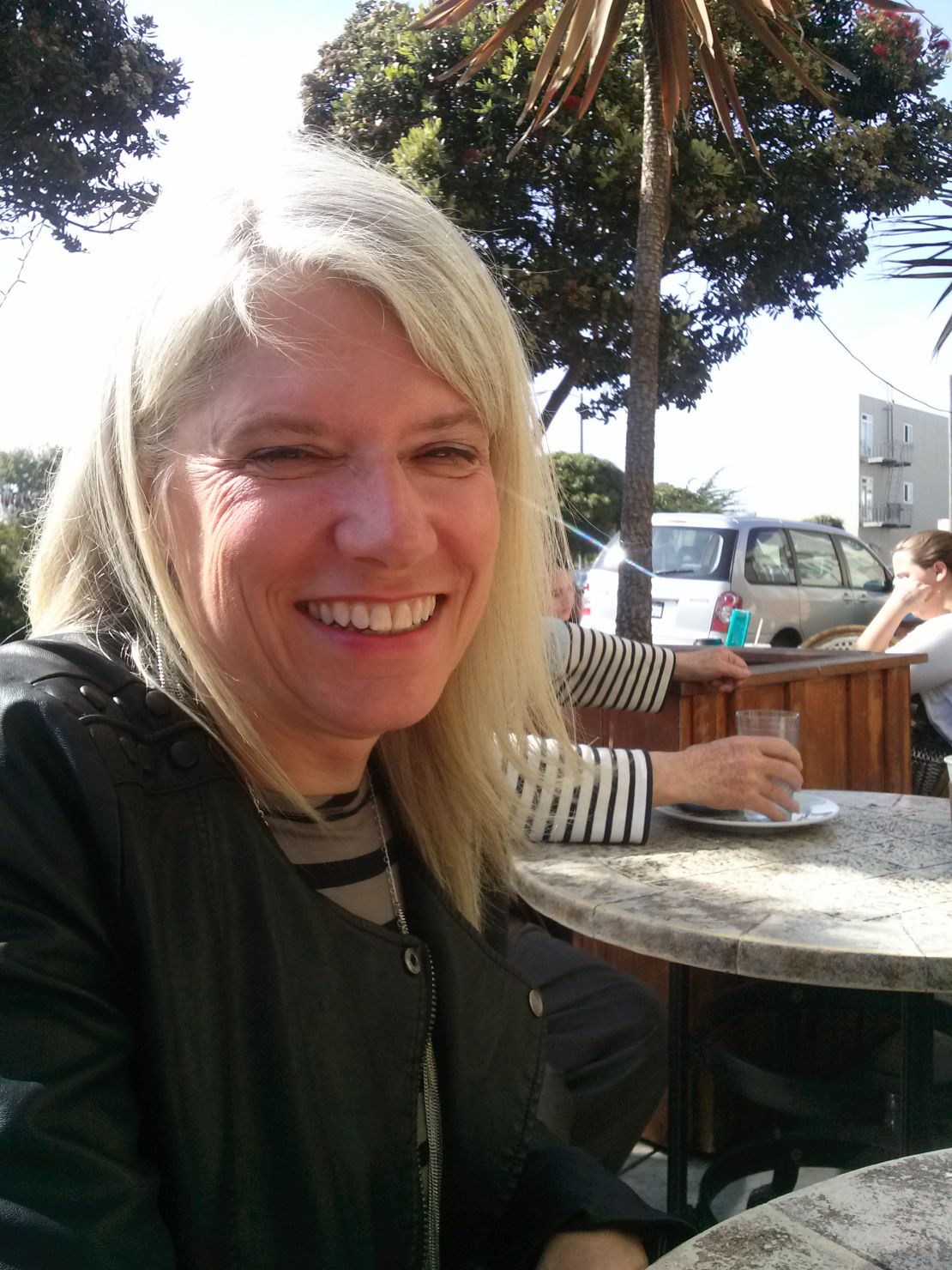Story highlights
Intersex bodies are surrounded by a lot of misinformation and mythology
Differences of anatomy may be evident at birth, later in life or not at all
Intimate connections can be difficult due to shame, stigma or physical difficulty
Experts advocate for early, honest communication with children born with intersex traits
There’s a vocabulary of protection used around the intersex community – of “escape” from sex assignment surgery to normalize their genitals, of PTSD and survivorship, of guilt from some whose bodies remain intact.
There’s also a shared experience of shame, secrecy and disconnection borne of being treated like a physical mistake. They arrived in the world with genetic mutations that affect them at intimate levels, and were taught to believe, often since birth, that their very existence is a condition that needs to be corrected.
The path to romantic connection with another human can feel isolated and impassible. The risk, impossible.
But it doesn’t have to be.
Activists like Bo Laurent, Jim Ambrose and Pidgeon Pagonis have made it their mission to guide people with intersex traits and differences of sex development, known as DSD, toward understanding their own worth in the world. They’re demanding visibility and justice in a culture that has long mythologized, marginalized and misunderstood their bodies. And some of them are hoping to find love with someone who truly sees them.
“It’s hard for people to wrap their head around what exactly is going on. It gets everywhere – it’s nothing but sprawl. It’s not limited to the bedroom,” says Ambrose, a writer and the co-founder of The Interface Project, a site that collects and shares personal stories of people living with an intersex condition or DSD.
So let’s start in the classroom with a quick lesson on what intersex is not: transgender, though the two are often erroneously lumped together or the “hermaphrodite” of lore and porn, possessed of fully functioning (and physically impossible) male and female genitalia.
It’s also not especially uncommon. A visible difference of sexual anatomy occurs in 1 out of every 1,500 to 2,000 births, according to statistics from the World Health Organization.
Medically speaking, intersex is defined as a congenital anomaly of the reproductive and sexual system. Katrina Karkazis, a senior research scholar at the Center for Biomedical Ethics at Stanford University, says that in most cases, people have a genetic mutation that affects development of sex organs. This might be evident at birth, later in life or not at all.

For example, in the case of people with complete androgen insensitivity syndrome, these women have XY chromosomes and testes. Their bodies produce testosterone, but because their bodies don’t respond to it, the genitalia don’t masculinize, and they don’t develop masculine secondary sex characteristics such as increased muscle mass, a deeper voice and facial hair.
“They have XY chromosomes and testes and you wouldn’t know that at birth because they are born with female genitalia,” Karkazis says.
From the 1950s until recently, parents of babies born with atypical or ambiguous genitalia were generally presented one option: genital surgery. This is most often done to present the child as female because of doctors’ beliefs that it’s an easier outcome to achieve with available medical techniques. This often entails surgeries to remove testes, reduce organs that might present as a small phallus or an outsized clitoris, or add a vaginal cavity.
To parents – shocked and confused by anatomy they don’t understand, and envisioning a life of otherness and romantic rejection for their newborn – surgery to “normalize” can seem like the most loving course of action.
In 1957, intersex rights pioneer Bo Laurent was born into a world of confusion. Medical professionals were “in a state of shock” for three days, unable to determine what sex she was, and her mother was kept sedated. Laurent was eventually labeled a boy, and her parents were dismissed from the hospital, unable to seek additional child care, lest their secret get out. When she was 1½ years old, another doctor decided to change her sex assignment so she could be raised as a girl.
“They performed a clitorectomy and they told my parents to move to another town and not tell anyone where they went and never tell me what happened,” Laurent says. “All those things were so traumatizing, frightening and pain-producing for my parents that it made it hard for them to relate normally to me.”

Alienated from her parents, withdrawn from her peers and deeply disconnected from her medically numbed and scarred body, Laurent avoided romantic and intimate connection with partners well into her 20s. Then, she started to seek answers.
The discovery of her intersex status finally offered a path into the world. Over the course of the past two decades, with her work as an activist, speaker and founder of the now-defunct Intersex Society of North America, Laurent has led others on a journey to connect body and soul – their own and others’.
“One of the things I’m proud of is that I think that I’ve helped to provide frameworks to talk about it, narratives that are now available to other people,” Laurent says.
‘Unequivocal visibility’
Jim Ambrose is one of the people Laurent helped. Though he’d been surgically assigned as female as a baby, furthered by hormones and by additional surgeries his late teens, Ambrose, now 37, vividly recalls how different he felt from the other girls, even at an early age.
“I remember the first girl in my class wearing a bra and I reacted exactly as every other boy in the class did,” he says. “I was enamored and fascinated.”
Unconsciously, he knew that the interest didn’t spring from girl-to-girl solidarity or a glimpse at his future. Watching a school-mandated sex-ed film about menstruation, he thought, “I don’t think this is ever going to happen to me.”
It didn’t, of course. Ambrose’s mother disclosed the reason when he was 12 and estrogen treatments soon followed.
Neither did he experience the sexual connections his peers were making.

At 16, Ambrose – still perceived as female by his peers – had a girlfriend (“by default,” he jokes, rather than a drive to romantically bond). He studiously kept her away from his intimate parts. In retrospect, it was out of self-protection. While the girlfriend never argued, she did confess to mutual friends that the distance “weirded her out.”
Word got back to Ambrose, and he was suddenly painfully aware that while he felt a deep detachment from his female-assigned body, it was no longer just of interest to his parents and doctors. It was now of interest to his peers – and his future sexual partners. After all, that’s what it had been surgically constructed for.
“The guiding principle was pair-bonding with a man and to be even more specific, to make sure that I possessed a proper vessel for an erect penis,” Ambrose says. “The end goal wasn’t that I would be a sexually satisfied woman, or a person who was curious about other forms of sexuality. … My personal sexual pleasure wasn’t taken into account.”
Stanford’s Karkazis sees this all too frequently in her work and friendships with members of the intersex community.
“Imagine for a moment that you want to connect with someone sexually, and you feel nothing sexual in your genitalia. Or you feel pain. I know people who have tried everything under the sun and have even contemplated more surgery. Imagine this kind of searching,” Karkazis says.
“The door is closed before it’s even opened. You can think you’re so damaged that no one will be satisfied with you.”
But after Ambrose struck up a friendship with Laurent, he used her framework of disclosure to amplify attempts at connection. A sympathetic and proactive doctor agreed with him that the removal of breasts and vaginoplasty were medically necessary – and the way to correct a wrong that had been done to him by the medical community. She started him on a regimen of compounded testosterone cream to correct bone density deficits that occurred when he stopped taking estrogen.
While he hadn’t consciously considered transitioning to a more male-presenting body before then, his physical response to the hormones was undeniable.
“Almost immediately, I felt a difference,” Ambrose recalls. “It’s like when a hunter is walking slowly through the woods and he steps on a branch and it cracks and the deer pops its head up to see what’s going on. What? What was that? My body was telling me, ‘Hey, this shit is good. Let’s do this. We’re into this.’ “
A year later, when he was in his late 20s, he began taking testosterone injections and presenting as male in public. His psyche and body were more aligned than they had ever been before, and he had been dating women all along, but the transition ushered in a whole new set of insecurities.
Ambrose says, “I was a man who didn’t have the penis that everyone was going to expect. And by ‘everybody’ I mean that I was really focused on dating straight women. I wanted to date women who were going to desire me as a man. … I wanted a woman to see me from across the room and say ‘Yeah, I want to f*** that guy,’ before they knew anything about me.”
He adopted Laurent’s technique of presenting his story honestly and early, telling prospective partners, “I work at this bookstore, but mostly I do advocacy work and it sends me around the country and I organize and do workshops and I sit on committees and I do fundraising for this little organization and … why do I do that? Well, because it happened to me.”
And it worked. A lot. Date after date after date was “a rousing success,” according to Ambrose.
“It puts me in a position of somebody who is being proactive about their life. One who is acting in defense of myself and others,” he says.
“To couch it that way informs the listener – often a potential sexual partner – that I care what you think, but I know enough about myself to know that if you want to perceive me as a victim, cry for me, be disgusted by me or get up and leave, you can do all of those things.
“My happiness, self-awareness and ability to get up in the morning doesn’t hinge on whether you want me to go home with you tonight.”
While Ambrose’s most recent long-term relationship ended a few months ago, he grows increasingly comfortable in the body he now has, and steadfast in his attempts at romantic connection with the right woman.
“I think there is a resilience gene. There are so many times when I could have packed it in, or subsisted on scraps. Or I could have chosen girlfriends who were bad for me or cruel or abusive, but I didn’t,” Ambrose says.
“I need for them to see me as plainly and clearly as they possibly can. I need unequivocal visibility from my sexual partner.”
‘Tickling is my hurrah’
Pidgeon Pagonis sought intimacy and found pain in its place. (Pagonis identifies as neither male nor female and uses the gender-neutral pronouns “they,” “them” and “their” to describe themselves.)
“I’m really persuaded by things, like the idea of what high school should be. I really wanted a high school experience and part of that was dating a boy and having sex with that boy,” says Pagonis, now 28.
At age 11, Pagonis was told that the genital surgery they had received as a child was to treat cancer, and the one they were about to receive was to fix a urine drip issue. In fact, the latter was to insert a vaginoplasty. At 16, Pagonis was dismayed by difficulty and pain during attempts at intercourse with a boyfriend.
“I’d never had any dilation (which would have kept the passage open), so it was just a shock to my body. I left that moment being like ‘That really hurt!’ ” Pagonis says. “But Cosmo (magazine) said it would get better. It didn’t get better in terms of pleasure, but it got better in terms of not hurting as much every single time.”

Still, Pagonis soon came to associate almost any intimacy, including kissing, with the impending pain of penetration, and found any desire evaporate the moment they were touched. Alcohol and marijuana offered some distance from the ache, but ushered in a host of other issues, including a cycle of abusive partners and vulnerability to sexual assaults while blackout drunk.
“I wanted to be so drunk that sex felt OK. I thought I’d feel less reserved and that sex would feel good. You strive to be normal when you know you’re not normal. Instead of talking it through, I would just drink,” Pagonis says.
After a college professor lectured on the topic of intersex traits and DSD to a “psychology of women” class, something clicked. Pagonis walked across the street from their classroom at DePaul University, down into the hospital basement where, coincidentally, their own medical records were kept.
There, Pagonis ripped open the shroud of shame and secrecy that had swaddled their body since the first surgery. The terms were unfamiliar – “male pseudohermaphrodite” and “46 XY” – but suddenly, so much made sense.
Their mother confirmed and, after throwing their phone at the wall, Pagonis vowed to tell no one.
But souls are loud and determined things. They seek and reach for connection despite all our best attempts at muffling them. Six months after the revelation, Pagonis started dating a woman to whom they disclosed the diagnosis. While the alignment of anatomy threw their physical differences into sharp relief – “I still don’t think my high school boyfriend knows I didn’t have a clitoris,” Pagonis likes to joke – alternatives to penetrative sex opened up a whole new realm of connection.
“These elements of intimacy are what I needed at the time,” Pagonis says. “Tickling is my hurrah!”
For now, the muting of sexual pleasure from the result of surgery and sexual trauma has proved a barrier to romantic pairing. Pagonis is flying solo, and attempting to find peace and pleasure in their own body with the help of a therapist.
” ‘Sex is 90% fiction and 10% friction!’ ” Pagonis quotes the therapist. “That stuck with me because when I was with people, I was always having fiction in my head and I thought this is because I’m messed up and I can’t just get off from the person.”
Pagonis relies on wise words from Laurent, too. “She told me, ‘Who cares? Think about whatever you need to. It’s in your head and you’re not hurting anybody. If you can get off, then good for you.’ ”
“I let the shame of having a different body and not looking ‘normal,’ debilitate me,” Pagonis says. “I needed that permission and Bo gave it to me.”
‘Love is like jumping off a cliff’
Pagonis now works as Advocates for Informed Choice’s youth leadership coordinator and a teen dating violence prevention coordinator, and firmly believes that doctors’ and parents’ lack of disclosure to intersexed children is as harmful as cosmetic surgery to conceal the physical differences.
“If people would just be honest and talk to you about your body, you might still make the same decisions, but I might not have – and I would have had someone to talk to and make healthier, safer choices,” Pagonis says.
Ambrose agrees: “I have yet to meet a parent who was intentionally trying to hurt their child. I have as much sympathy for my parents and my friends’ parents as I do us. You perform these surgeries aimed to ‘normalize’ a child and then you expect the child to be quiet and not talk to anyone about it. You’re going to color every aspect of the child’s life, and your life.”
And at 57, Laurent herself is still learning the boundaries of her own worth and wonder. After the end of her marriage and a period of being single, she decided to try again, and was shocked to find herself loved and loving once more.
Laurent found herself opening her heart to a younger woman who she met online and who had never heard of intersex conditions.
“She wasn’t familiar with those words or the story, but I did tell her about the clitorectomy. I was surprised and comforted at how well she took that,” Laurent says.
For all the people who Laurent has rowed to safety in her years of advocacy, it was a personal risk for her, and this woman could see that. She reached across the distance between them.
As they were becoming more serious, she sent Laurent a quote she still remembers.
“It read: ‘Love is like jumping off a cliff,’ ” Laurent says. “‘Your head says you’re going to die, but your heart says, that’s OK, you can fly.’”
More resources:
Global Action for Trans* Equality
Intersex Society of North America
Organization Intersex International in the United States of America
Brief Guidelines for Intersex Allies (PDF)
Further reading and viewing:
“XXXY” - documentary by Porter Gale and Laleh Soomekh
“Silence = Death” - essay by Tamara Beck
“Caught Between: An Essay on Intersexuality”
Full-Frontal Activism: Intersex and Awesome
“Fixing Sex: Intersex, Medical Authority, and Lived Experience”
“Intersexion” - documentary
